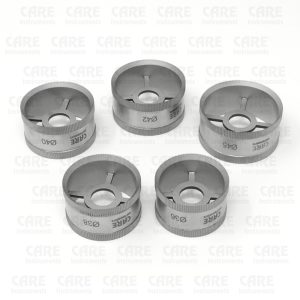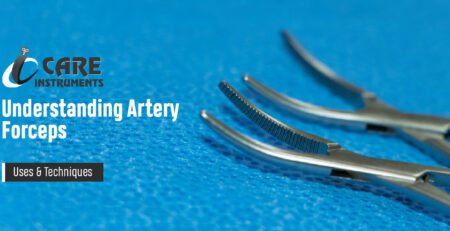Breast Markers: What They Are and How They Help Detect and Treat Breast Cancer
Brest markers helps in the detection of Breast Cancer. Breast cancer is a significant health concern that affects millions of women worldwide. Early detection of breast cancer is essential to ensure successful treatment outcomes. Breast markers play a vital role in detecting and treating breast cancer. In this blog post, we will explore what breast markers are, how they work, and their benefits and risks.
 Introduction
Introduction
Breast markers are tiny objects that are placed in or near breast tissue to help locate tumors or areas of concern. Breast markers help radiologists and surgeons identify the location of the tumor during imaging and surgical procedures. Breast markers have been in use for many years and are an essential tool in breast cancer diagnosis and treatment.
Types of Breast Markers
Breast markers come in various types, including non-invasive breast markers, invasive breast markers, surgical breast markers, and radiopharmaceuticals. Non-invasive breast markers include ultrasound and MRI-guided markers, while invasive breast markers include wire localization and radioactive seed localization. Surgical breast markers are placed during surgery, and radiopharmaceuticals are injected into the breast tissue.
Breast markers are available in a variety of types to suit different needs.
- Non-invasive breast markers (e.g. ultrasound and MRI-guided markers)
- Invasive breast markers (e.g. wire localization and radioactive seed localization)
- Surgical breast markers (placed during surgery)
- Radiopharmaceuticals (injected into the breast tissue)
Non-invasive breast markers like ultrasound and MRI-guided markers are used to locate tumors without physically penetrating the skin or breast tissue. Invasive breast markers like wire localization and radioactive seed localization involve inserting markers into the breast tissue using a needle or other surgical means. Surgical breast markers are typically placed during surgery, making them more invasive but also more accurate. Radiopharmaceuticals are injected into the breast tissue and emit a small amount of radiation, which helps identify the location of the tumor. The choice of marker used depends on the specific needs of the patient and the procedure.
How Breast Markers Work
Breast markers work by helping identify the location and extent of a breast tumor. Non-invasive breast markers use imaging to locate the tumor, while invasive markers use physical markers to guide surgeons during surgery. Radiopharmaceuticals emit a small amount of radiation, which helps identify the location of the tumor.
 Breast markers work by providing a reference point to locate a breast tumor during diagnosis and treatment. Non-invasive breast markers such as MRI or ultrasound-guided markers, use imaging technology to locate and mark the tumor’s location. On the other hand, invasive breast markers such as wire localization and radioactive seed localization use physical markers inserted into the breast tissue to guide surgeons during surgery. Radiopharmaceuticals are also used to identify the location of tumors by emitting a small amount of radiation. These markers enable radiologists and surgeons to visualize the tumor precisely and accurately, increasing the chances of successful treatment outcomes.
Breast markers work by providing a reference point to locate a breast tumor during diagnosis and treatment. Non-invasive breast markers such as MRI or ultrasound-guided markers, use imaging technology to locate and mark the tumor’s location. On the other hand, invasive breast markers such as wire localization and radioactive seed localization use physical markers inserted into the breast tissue to guide surgeons during surgery. Radiopharmaceuticals are also used to identify the location of tumors by emitting a small amount of radiation. These markers enable radiologists and surgeons to visualize the tumor precisely and accurately, increasing the chances of successful treatment outcomes.
Uses of Breast Markers in Breast Cancer Diagnosis
Breast markers are used in breast cancer diagnosis to identify the location and extent of the tumor. They guide biopsy procedures and help monitor response to treatment. Breast markers are also used to evaluate the effectiveness of chemotherapy or radiation therapy.
 Breast markers are particularly useful in guiding biopsy procedures, as they help ensure that the biopsy is taken from the precise location of the tumor. This can reduce the need for repeat biopsies and ensure more accurate diagnosis. In addition, breast markers can help monitor the response to treatment by tracking the size and location of the tumor over time. This information can be used to adjust treatment plans or assess the effectiveness of ongoing therapy.
Breast markers are particularly useful in guiding biopsy procedures, as they help ensure that the biopsy is taken from the precise location of the tumor. This can reduce the need for repeat biopsies and ensure more accurate diagnosis. In addition, breast markers can help monitor the response to treatment by tracking the size and location of the tumor over time. This information can be used to adjust treatment plans or assess the effectiveness of ongoing therapy.
Breast markers can also be used to evaluate the effectiveness of chemotherapy or radiation therapy. By identifying the exact location of the tumor, breast markers can help ensure that radiation therapy targets the tumor accurately and minimizes exposure to healthy tissue. In addition, breast markers can help determine the extent of the tumor before surgery, which can guide the surgical approach and ensure complete removal of the tumor. Overall, breast markers are a valuable tool in breast cancer diagnosis and treatment, helping to improve outcomes and reduce the need for invasive procedures.
Uses of Breast Markers in Breast Cancer Treatment
Breast markers are used in breast cancer treatment to plan surgery, targeted radiation therapy, neoadjuvant therapy, and other treatment options. Breast markers help ensure that the tumor is removed completely during surgery and that the radiation therapy targets the tumor accurately.
Breast markers are an integral part of breast cancer treatment planning. They assist in the planning of surgical procedures to remove the tumor, including lumpectomies and mastectomies. By marking the location of the tumor, breast markers help ensure that the entire tumor is removed during surgery, reducing the risk of cancer recurrence.
Targeted radiation therapy is another important component of breast cancer treatment that benefits from the use of breast markers. Radiation therapy can be focused directly on the tumor site, which maximizes its effectiveness while minimizing exposure to healthy tissue.
Neoadjuvant therapy, which involves administering chemotherapy or other treatments before surgery, can also benefit from the use of breast markers. By tracking the response of the tumor to the treatment, doctors can adjust the therapy regimen as necessary to ensure the best possible outcome for the patient. Overall, the use of breast markers in breast cancer treatment provides significant benefits and plays a crucial role in improving patient outcomes.
Placement and Removal of Breast Markers
 Breast markers are usually placed using a needle or wire, and in some cases, surgery is required. The removal of breast markers depends on the type of marker used. Some markers are removed during surgery, while others may be removed during a separate procedure.
Breast markers are usually placed using a needle or wire, and in some cases, surgery is required. The removal of breast markers depends on the type of marker used. Some markers are removed during surgery, while others may be removed during a separate procedure.
Breast markers can be placed using minimally invasive techniques such as a needle or wire, but in some cases, surgery may be necessary. The method of removing the marker depends on the type of marker used; some markers are removed during surgery, while others may require a separate procedure.
Benefits and Risks of Breast Markers
Breast markers have several benefits, including improved accuracy in identifying the location of the tumor, less invasive surgery, and targeted radiation therapy. However, there are some risks associated with breast markers, such as infection, pain, and discomfort.
- Improved accuracy in identifying the location of the tumor
- Less invasive surgery
- Targeted radiation therapy
- Better planning of treatment options
- Monitoring treatment response
- Evaluation of the effectiveness of chemotherapy or radiation therapy
Breast markers also allow for more precise surgical planning and better monitoring of treatment effectiveness. They also enable medical professionals to avoid unnecessary surgery or radiation, which can be harmful to healthy breast tissue. However, as with any medical procedure, there are risks associated with the use of breast markers. Infection, pain, and discomfort are the most common risks. In rare cases, breast markers can migrate to other areas of the body, causing complications. It is important for patients to discuss the benefits and risks of breast markers with their healthcare provider to make an informed decision about their treatment plan.
Conclusion
Breast markers play a vital role in breast cancer diagnosis and treatment. They help identify the location and extent of the tumor, guide biopsy procedures, and monitor treatment response. While there are risks associated with breast markers, the benefits outweigh the risks, and they are an important tool in the fight against breast cancer. If you have concerns about breast markers, talk to your healthcare provider about your options.

 Introduction
Introduction
Leave a Reply
You must be logged in to post a comment.